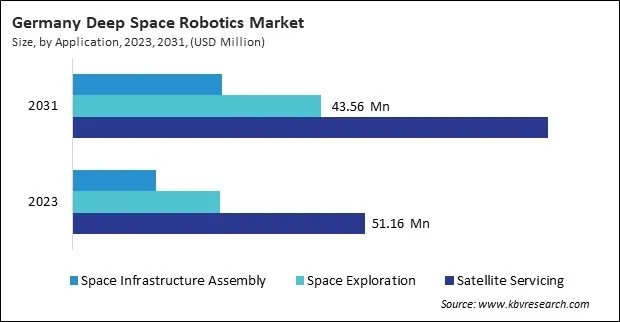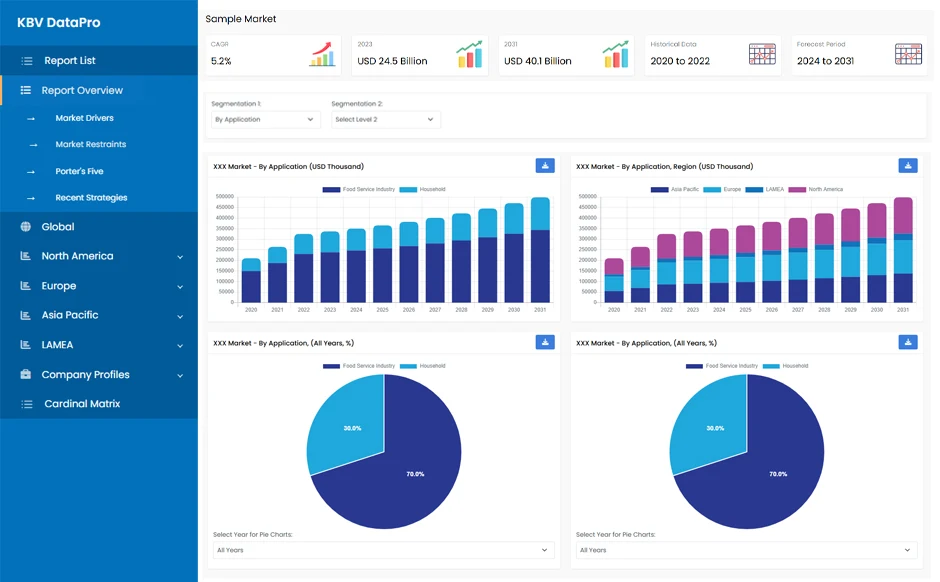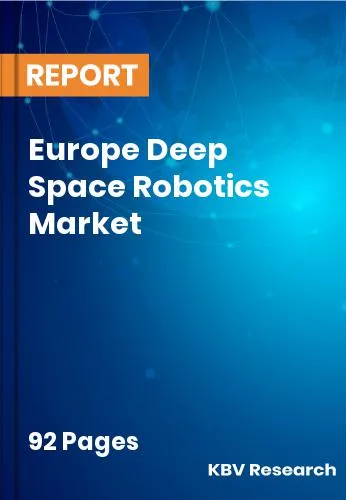The Europe Deep Space Robotics Market would witness market growth of 7.6% CAGR during the forecast period (2024-2031).
The Germany market dominated the Europe Deep Space Robotics Market by Country in 2023, and would continue to be a dominant market till 2031; thereby, achieving a market value of $153 million by 2031. The UK market is exhibiting a CAGR of 7% during (2024 - 2031). Additionally, The France market would experience a CAGR of 8.4% during (2024 - 2031).

The applications of deep space robotics are as vast as the universe itself, reflecting the diverse needs of space exploration and utilization. One of the most prominent uses is planetary exploration, where robots such as rovers and landers traverse alien landscapes to gather data on surface conditions, atmospheric composition, and potential signs of life. NASA’s Mars rovers, for instance, have set the standard for such missions, with each iteration—most recently the Perseverance rover—demonstrating enhanced capabilities in sample collection and analysis. These robotic explorers are indispensable for missions to distant moons like Europa or Titan, where human presence is unfeasible due to environmental extremes.
Another critical application is satellite servicing, a growing necessity as the number of satellites in orbit increases. Deep space robots equipped with manipulator arms and advanced sensors can repair, refuel, or reposition satellites, extending their operational lifespans and reducing space debris. This capability is vital for geostationary satellites, which play a key role in telecommunications and weather monitoring. Companies like Northrop Grumman have already demonstrated success with their Mission Extension Vehicles, signalling a shift toward sustainable space operations.
The steady growth of the European space sector highlights its commitment to deep-space exploration, necessitating advancements in robotics for mission efficiency and safety. The rise in spacecraft production signifies a greater emphasis on autonomous space systems, including robotic arms, rovers, and AI-driven probes that can operate in extreme extraterrestrial conditions. Agencies like the European Space Agency (ESA) are investing in robotic technologies to support upcoming missions, including lunar and Mars explorations.
Free Valuable Insights: The Global Deep Space Robotics Market will Hit USD 2.40 Billion by 2031, at a CAGR of 7.8%
Based on End User, the market is segmented into Government and Commercial. Based on Application, the market is segmented into Satellite Servicing, Space Exploration, and Space Infrastructure Assembly. Based on Solution, the market is segmented into Services, Remotely Operated Vehicles, Remote Manipulator System, and Software. Based on countries, the market is segmented into Germany, UK, France, Russia, Spain, Italy, and Rest of Europe.

By End User
By Application
By Solution
By Country
Our team of dedicated experts can provide you with attractive expansion opportunities for your business.

